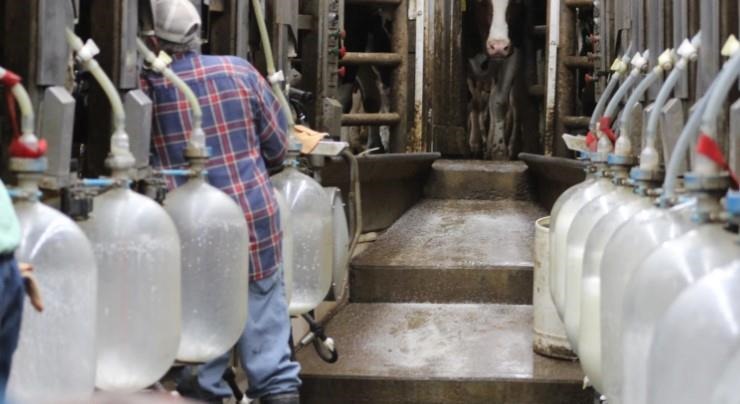Pigs eat crops, pigs leave nutrients in manure, manure is used to fertilize crops and pigs eat crops – it is a sustainable operation that puts pork on the table across the nation and worldwide.
But the system can be improved. Better diets for the animals result in better nutrients. Increasing the precision in the process results in higher efficiencies.

Research on optimizing the sustainability of the pork production is taking place at Texas A&M’s O. D. Butler, Jr. Animal Science Complex. (Texas A&M AgriLife photo by Laura McKenzie)
That’s the purpose of a new National Pork Board grant-funded project being conducted by a team from the Texas A&M College of Agriculture and Life Sciences’ Department of Animal Sciences.
Jeff Wiegert, Ph.D., Texas A&M AgriLife Extension Service swine specialist and assistant professor, and Luis Tedeschi, Ph.D., Texas A&M AgriLife Research ruminant nutritionist and Chancellor EDGES Fellow, will lead the project. Karun Kaniyamattam, Ph.D., is a postdoctoral research associate on computer modeling.
Accounting for natural variation
The primary objective of the work is to develop a sustainability index of the U.S. swine industry, Wiegert said.
“By its nature, animal agriculture, and the swine industry in particular, is a sustainable operation,” he said. “Our intention is to optimize the sustainability of the swine industry by improving the precision of the process.”
Wiegert explained that what’s being examined is the natural variation involved. The nutrient content of feedstuffs is influenced by region-specific factors; the nutrient requirements of pigs are influenced by pig-specific factors; and the nutrient content of the manure is influenced by both feedstuff and pig factors.
“The calculations typically used to formulate diets and predict manure nutrient output utilize a simplistic model that assumes the caloric content of a given feedstuff is always X, the protein content of the feedstuff is always Y, and that those two can be added together to create a diet that meets the pig’s caloric requirements A and protein requirements B,” he said.
This is deterministic modeling, Wiegert said, and most livestock are fed diets formulated through a deterministic model such as that developed by the National Resource Council in 2012.
The system works pretty well because decades have been spent figuring out pig nutrient requirements, nutrient digestibility, and so on. However, variation creates problems.
“Variables are never just X or Y, they are X plus or minus or Y plus or minus,” Wiegert said. “Same with the pig’s requirements. That inherent variation and uncertainty creates imprecision in the system that prevents feedstuffs from being utilized to their fullest value, prevents pigs from reaching their most efficient potential for performance, and manure nutrients from being accurately estimated.”
Moving away from deterministic modeling is also necessary to account for random events and better understand which feeding practice is less risky, Tedeschi said.
“We need to know which feeding practices have the highest probability of yielding a sustainable outcome,” he said. “Deterministic modeling is a great tool that allowed us to learn and develop decision support systems in the last 50 years. Still, we need to move on to new technologies that are more challenging but can help us with so many random events going on at the same time.”
Building in efficiency, sustainability
The team intends to incorporate stochastic modeling into existing swine nutrition models to determine the impact of this natural variation in feed resource nutritional quality on swine growth performance, feed efficiency, carcass quality and manure nutrient composition.
Stochastic modeling includes natural variation as an input to allow for the estimation of a range of probability outputs, Wiegert said.
“This will allow us to determine the degree to which efficiency is ‘lost’ by not accounting for that variation,” he said. “Once this is completed, we’ll also complete a life cycle assessment of each step of resource utilization to gain a more holistic understanding of the sustainability of pork production in the U.S.”
Wiegert said the results of this work will provide industry leaders and regulatory agencies a more complete understanding of the sustainability of the swine production.
“We will also be able to develop a sustainability index through which pork producers may be able to gauge the performance of their own operations to drive continuous improvement in an important field,” he said.
The team expects to provide actionable data at the end of the three-year grant.
Source : tamu.edu